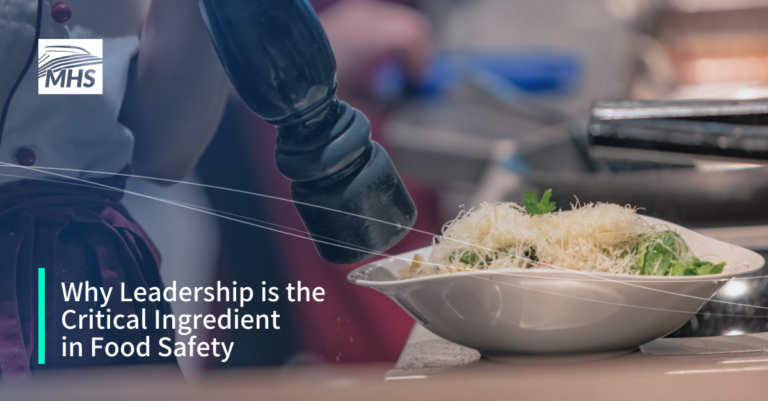On a cruise ship, food safety isn’t just a behind-the-scenes concern. It’s a frontline issue that directly impacts the health of guests, crew, and a company’s reputation. A single lapse can lead to illness, erode consumer trust, and attract the kind of media attention no brand wants.
While food and beverage teams are responsible for the daily practices that keep food safe, the standards that govern how it’s handled, stored, and served are set long before a single dish leaves the galley. Those standards are shaped much higher up the organizational chart by the people who draft policies, approve budgets, and define company expectations. Their decisions ultimately determine what’s possible at the shipboard level.
Leadership influences every area of maritime public health—from outbreak response and water safety to pest control—but it holds particular significance in food safety. The quality of food served is often directly tied to how guests perceive their overall cruise experience. Food and guest satisfaction go hand in hand, and hygiene standards are sometimes compromised in the name of keeping those ratings high.
But no matter how elegant the plating or inventive the menu, food safety must always come before taste: a commitment that has to start at the very top.
Why Leadership Matters in Food Safety
Food safety failures are rarely the result of a single mistake. More often, they stem from a series of small oversights: a blast chiller left unrepaired, hand hygiene ignored during busy bar service, or a malfunctioning warewashing machine kept in use (until the night before a sanitation inspection).
These gaps don’t appear in isolation. They develop in environments where food safety is treated as a checklist item rather than a core value.
This is where good leadership makes the difference.
When management visibly prioritizes food safety—through their actions, expectations, and accountability—they create a culture where others follow. Their commitment sets the tone for what gets attention, where resources go, and which behaviours are reinforced. When it comes to public health, Peter Drucker was right: “Culture eats strategy for breakfast.”
Leadership doesn’t have to be technical to be effective. The VP of Hotel Operations doesn’t need to know how to calibrate a thermometer, but they do need to ask the right questions, act on the answers, and support a culture where high standards are non-negotiable.
When cruise line leadership treats food safety as a prerequisite, the rest of the organization will take it seriously too.
A Framework for Leadership Accountability
When leadership doesn’t fully own its role in food safety, the result is a disconnect between policy and practice. Mistakes are blamed on individuals, while the systemic causes—resource constraints, poor communication, and unclear guidance—go unaddressed. Crew members are left to manage risks they didn’t create, often without the tools or authority to solve them.
To close this gap, accountability must flow upward as well as downward. Senior leaders should:
- Stay informed about food safety performance and fleet-wide trends
- Participate actively in food safety conversations
- Receive timely reports on incidents, including near-misses
- Ensure those responsible for food safety have the support, staffing, and tools they need
Positioning food safety as a strategic priority means more than issuing policy. It requires consistent attention and engagement. That includes assigning clear roles, reviewing policies regularly, and adapting to operational realities. It also means making space for shipboard leaders—F&B Managers, Executive Chefs, and Public Health Officers—to raise concerns and be heard when they do.
A strong food safety culture doesn’t happen by accident. It grows when leaders model the right behaviours, respond constructively to problems, and make it clear that a company’s food safety policies are to be followed even under pressure. Safety cannot be optional when service gets busy.
This requires regularly asking the hard questions:
- Are our food safety measures effective?
- Are they being followed?
- Are we learning from incidents and near-misses?
A healthy safety culture depends on honest answers, ongoing feedback, and a willingness to improve. The risks can’t be eliminated, but they can be understood, anticipated, and controlled.
Leading by Example
Food safety on cruise ships isn’t just about hygiene protocols or training sessions. It’s about the priorities set by those in charge. When management views food safety as essential to operational success, it shapes every layer of decision-making: from budgets and staffing, to training and maintenance.
The most successful food safety programs aren’t built on slogans. They’re built on leadership that walks the talk. In companies where accountability flows in all directions, where high standards are upheld without compromise, food safety becomes part of the culture.
Because in the end, every safe meal served on board is a reflection of leadership decisions made long before it reached the plate.

